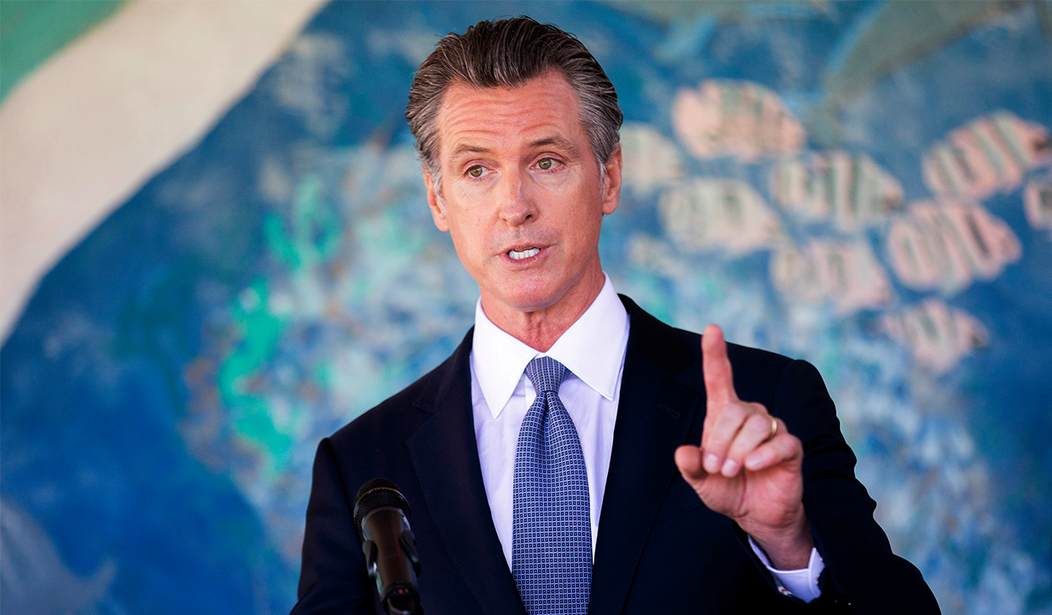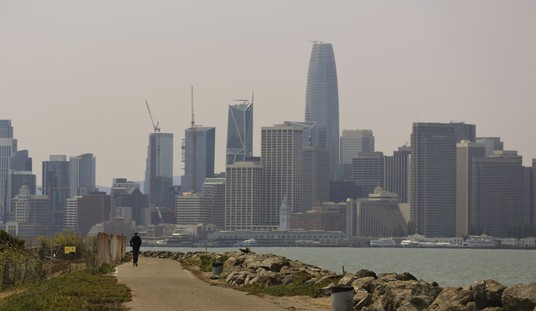Can the state of California enforce its own idea of “scientific consensus” on doctors who treat patients for COVID-19? Not after last night, when US District Court Judge William Shubb slapped an injunction on enforcement of AB 2098. This undoubtedly sets up a showdown at the Ninth Circuit, but for the moment the gag rule on doctors has been shut down.
After reading Shubb’s opinion about how badly the state legislature crafted the law, however, Gavin Newsom might want to think twice about further exposure. In the first place, the law forces doctors to only convey the “scientific consensus” on COVID-19 rather than their own judgment, when no one — not the legislature or its attorneys — can provide a definition of that term in relation to COVID-19:
Judicial references to the concept of scientific consensus–in the context of COVID-19 as well as other disputed scientific topics–confirm that the term lacks an established meaning. Courts have based their understanding of scientific consensus on a wide range of sources, including U.S. professional organizations, international professional organizations, state and federal courts, U.S. scientific studies, international scientific studies, various federal agencies, and the state of California.
Because the term “scientific consensus” is so ill-defined, physician plaintiffs are unable to determine if their intended conduct contradicts the scientific consensus, and accordingly “what is prohibited by the law.” See Tingley, 47 F.4th at 1089. As discussed in greater detail in Section III of this Order, plaintiffs represent that they have provided and would like to continue providing certain COVID-19-related advice and treatment that contradict the positions of public health agencies like the CDC. If the “consensus” is determined by United States public health recommendations, physician plaintiffs’ intended conduct would contradict that consensus; if the same term is defined by other metrics, their conduct may be permissible. The language of the statute provides no way to determine which of multiple interpretations is appropriate.
Rather than merely providing the statute with “flexibility and reasonable breadth,” the term “scientific consensus” makes it impossible to understand “what the ordinance as a whole prohibits.”
Shubb agrees with the plaintiffs in this action, noting that the “scientific consensus” regarding a novel virus only under study for three years is at best an aspirational concept. In practice, as Shubb notes, the “consensus” — as defined by California’s reliance on public-health officials — has changed repeatedly in that time. That puts every doctor at risk for prosecution in California no matter what they might say in any given moment, a standard so unreliable as to practically embody the terms “arbitrary” and “capricious”:
Physician plaintiffs explain how, throughout the course of the COVID-19 pandemic, scientific understanding of the virus has rapidly and repeatedly changed. (Høeg Decl. ¶¶ 15-29; Duriseti Decl. ¶¶ 7-15; Kheriaty Decl. ¶¶ 7-10; Mazolewski Decl. ¶¶ 12-13.) Physician plaintiffs further explain that because of the novel nature of the virus and ongoing disagreement among the scientific community, no true “consensus” has or can exist at this stage. (See id.) Expert declarant Dr. Verma similarly explains that a “scientific consensus” concerning COVID-19 is an illusory concept, given how rapidly the scientific understanding and accepted conclusions about the virus have changed. Dr. Verma explains in detail how the so-called “consensus” has developed and shifted, often within mere months, throughout the COVID-19 pandemic. (Verma Decl. ¶¶ 13-42.) He also explains how certain conclusions once considered to be within the scientific consensus were later proved to be false. (Id. ¶¶ 8-10.) Because of this unique context, the concept of “scientific consensus” as applied to COVID-19 is inherently flawed.
At this point, California’s attorneys tried to argue that “scientific consensus” becomes better defined when combined with the requirement to adhere to the “standard of care” for COVID-19. Even putting aside the fact that the standards of care have also shifted as the virus and acute cases get more study, that argument has another big problem. Shubb doesn’t start with the legislature’s apparent inability to craft sentences in English, but he does use it to bolster his finding that AB 2098 is unconstitutionally vague — in this instance, to the point of incoherence:
However, far from clarifying the statutory prohibition, the inclusion of the term “standard of care” only serves to further confuse the reader. Under the language of AB 2089 [sic], to qualify as “misinformation,” the information must be “contradicted by contemporary scientific consensus contrary to the standard of care.” Cal. Bus. & Prof. Code § 2270. Put simply, this provision is grammatically incoherent. While “statutes need not be written with ‘mathematical’ precision, they must be intelligible.” Valle del Sol, 732 F.3d at 1020 (quoting Forbes, 236 F.3d at 1011) (alterations adopted). It is impossible to parse the sentence and understand the relationship between the two clauses–“contradicted by contemporary scientific consensus” and “contrary to the standard of care.”
The state’s attorneys argued that the judge could read that as two separate mandates, but Shubb didn’t buy it. If that’s what the legislature intended, he argues, then legislators should have separated the two clauses with a comma and or a conjunction. As it reads, though, the two clauses modify each other into utter incoherence, made worse by the fact that both “scientific consensus” and “standard of care” are impossibly arbitrary and ambiguous terms when applied to COVID-19.
The same applies to the term “false information,” also used by the legislature:
Defendants also argue that the inclusion of the term “false information” as a separate element further clarifies the definition, or at least provides truthfulness as a defense. (See Høeg Opp’n at 21-22; Hoang Opp’n at 21-22.) See also McDonald, 2022 WL 18145254, at *7. While this reasoning may appear sound at first, drawing a line between what is true and what is settled by scientific consensus is difficult, if not impossible. The term “scientific consensus” implies that the object of consensus is provable or true in some manner. This is evident in the examples of “consensus” given by defendants–that apples contain sugar, that measles is caused by a virus, and that Down’s syndrome is caused by a chromosomal abnormality. (See Høeg Opp’n at 21; Hoang Opp’n at 21.) These propositions are so universally agreed upon that they are considered factual. It is hard to imagine a scenario in which the Boards consider a proposition to be settled by the scientific consensus, yet not also “true.”
Moreover, as discussed above, because COVID-19 is such a new and evolving area of scientific study, it may be hard to determine which scientific conclusions are “false” at a given point in time. The term “false information” thus fails to cure the provision’s vagueness.
The attorneys then argued that the court could replace “false information” with “misinformation,” but Shubb rejected that as well. Not only does it not help, it’s also not his job:
While the court must “consider any limiting construction that a state court or enforcement agency has proffered,” CPR for Skid Row v. City of Los Angeles, 779 F.3d 1098, 1103 (9th Cir. 2015) (quoting Hoffman Estates, 455 U.S. at 494 n.5), what defendants propose is not a narrowing or limiting construction at all. Rather, the proposed construction would require the court to essentially “[r]ewrite[e] the statute.” See Valle del Sol, 732 F.3d at 1021. This “is a job for the [California] legislature, if it is so inclined, and not for this court.” See id.
Because the definition of misinformation “fails to provide a person of ordinary intelligence fair notice of what is prohibited, [and] is so standardless that it authorizes or encourages seriously discriminatory enforcement,” Williams, 553 U.S. at 304, the provision is unconstitutionally vague.
As a result, Shubb imposed an injunction on any enforcement of AB 2098. New Civil Liberties Alliance, which represented the plaintiffs in Høeg v Newsom, celebrated the victory, temporary though it may be:
NCLA commends Judge Shubb for safeguarding our clients’ rights to free speech by enjoining this vague law. Judge Shubb’s decision also granted a PI in a second case making similar arguments against the law in a later-filed case that was argued before him at the same time this past Monday on behalf of additional plaintiffs.
NCLA released the following statements:
“NCLA is gratified Judge Shubb has recognized that AB 2098, which seeks to punish California doctors for giving patients information that departs from the so-called contemporary scientific consensus about Covid, creates an impossible standard for physicians to follow and would result in silencing physicians who disagree with state orthodoxy. The speed with which he issued his decision no doubt reflects the significance of the constitutional problems the law presents, as well as the negative consequences it would have for doctor-patient relationships.”
— Jenin Younes, Litigation Counsel, NCLA“This Act is a blatant attempt to silence doctors whose views, though based on thorough scientific research, deviate from the government-approved ‘party line.’ At no point has the State of California been able to articulate the line between permissible and impermissible speech, further illustrating how problematic the statute is. NCLA is pleased the Court recognized all the problems with AB2098 and enjoined this unconstitutional law.”
— Greg Dolin, M.D., Senior Litigation Counsel, NCLA
They can celebrate now, but only as long as the case takes to get to the Ninth Circuit. As Jonathan Turley warns, another federal judge had earlier given California a green light to enforce AB 2098, setting up a showdown:
With the recent passage of AB 2098, California took a highly controversial step in barring doctors from offering “false information” on Covid-19 and related subjects. The law is an extension of Democratic efforts to block or censor “misinformation” and “disinformation” in society from social media to medicine. However, this effort involves direct government action. As will come as little surprise to many on this blog, I opposed the measure as unconstitutionally vague and a threat to free speech. Nevertheless, Judge Fred Slaughter (C.D. Cal.) in McDonald v. Lawson held that this statute was likely constitutional and rejected a motion for a preliminary injunction. Now, however Judge William Shubb (E.D. Cal.) has reached the opposite conclusion in Hoeg v.Newsom, granting an injunction. …
Both opinions are well written and now present an excellent foundation for a ruling by the United States Court of Appeals for the Ninth Circuit and possibly the Supreme Court. I obviously favor Judge Shubb’s opinion, but this is likely to cause the same divisions on appeal where “consensus” may be equally difficult to establish.
At least doctors will be free to express their own advice in the meantime. That will make California seems a little more like America during that interregnum.








Join the conversation as a VIP Member